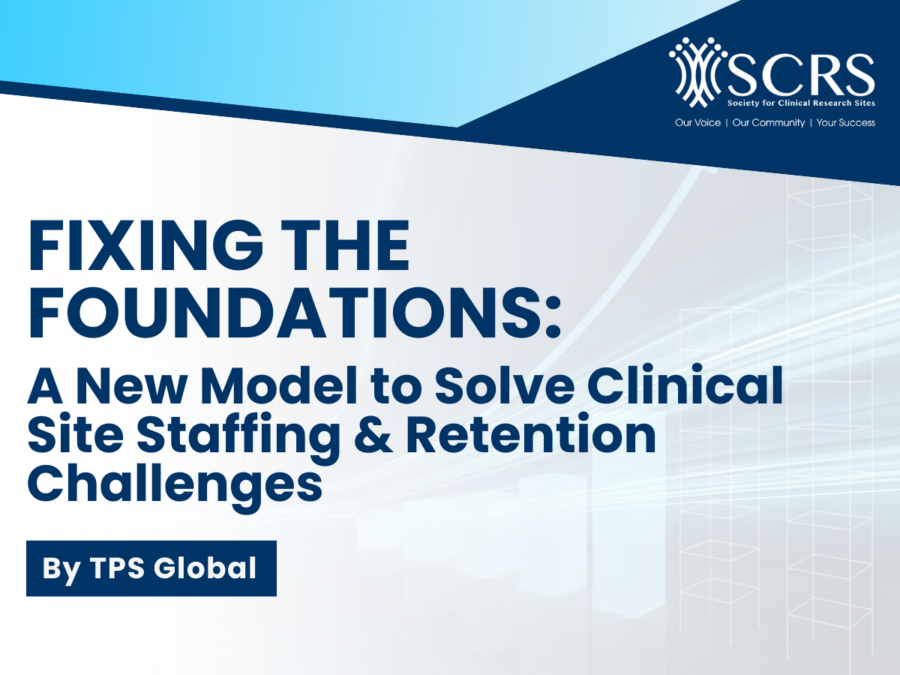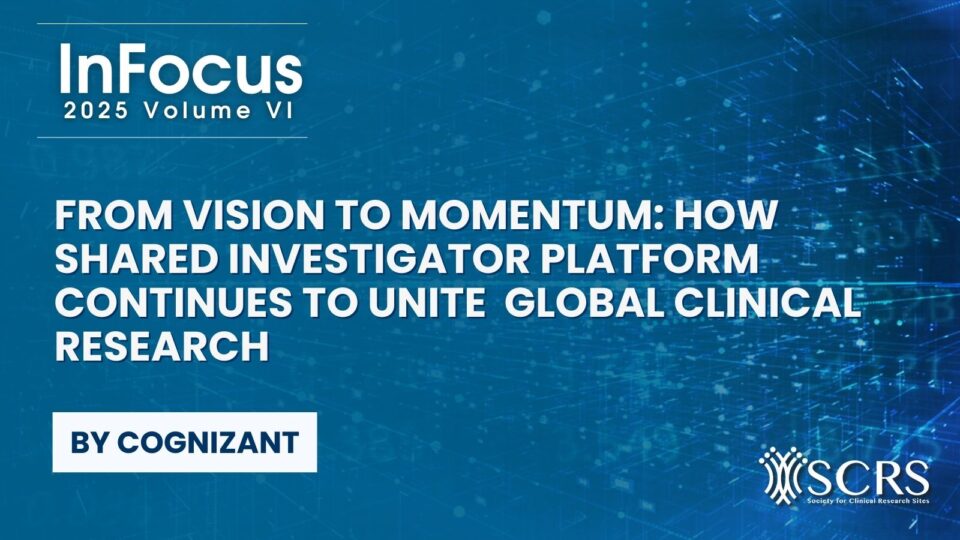Fixing the Foundations: A New Model to Solve Clinical Site Staffing and Retention Challenges

“Keeping top talent at clinical research sites feels like a never-ending game of musical chairs—just as one team member settles in, another moves on.”
Employee retention remains one of the most pressing challenges clinical research sites face today. With staff turnover impacting trial continuity, compliance, culture, and participant experience, the issue strikes at the very core of successful clinical trial execution. According to the U.S. Bureau of Labor Statistics, while the average American employee stays in a role for 4.1 years, clinical research professionals average just 1.5 to 2 years in their roles1-2. In a recent Society for Clinical Research Sites (SCRS) site surveyshowed annual turnover rates ranging between 35% and 61%—a statistic that paints a clear picture of an unstable workforce3.
High turnover causes inefficiencies, disrupts workflows, delays trials, increases costs, and undermines patient and sponsor confidence. And the burden of replacing and training new hires isn’t insignificant4. SCRS reports that sites estimate the average added cost to recruit and train a new, patient-facing team member equals approximately six months of their salary.
The Landscape Has Changed—and So Must the Model
The clinical site environment has evolved dramatically in recent years. Private equity-backed site networks are rapidly scaling, creating pressure to “do more with less.” Meanwhile, patient-facing professionals are being poached into roles with less oversight, pulled away from the bedside and into centralized or sponsor-side functions. And as these transactional dynamics between sponsors and sites become more commonplace, meaningful collaboration is lost.
Sponsors continue to rely on sites as the engine of trial execution, yet rarely do they invest in stabilizing the workforce that drives performance. The current approach leaves sites grappling with resource shortages, unpredictable enrollment, inconsistent data quality, and burnout among overburdened coordinators.
Not Just a Staffing Fix—A Movement to Rebuild Trust
At TPS, we believe it’s time to reimagine how sites and sponsors work together. Clinical research succeeds when the workforce behind it is empowered, stable, and invested in the outcomes.
Sponsors benefit from dedicated, focused professionals with fewer distractions. Sites benefit from removing the most costly and time-consuming component of trial execution. And the workforce benefits from meaningful, permanent roles where their expertise matters—bringing purpose back to patient-facing research.
This isn’t just a staffing solution. It’s a paradigm shift. And it’s long overdue.
Rethinking the Clinical Research Workforce Model
The clinical research landscape is evolving, and with it, the need for innovative workforce models that support both trial execution and site sustainability. Traditional outsourcing approaches have often fallen short in addressing the growing operational burdens that research sites face. A new approach has emerged—one that centers on long-term, site-embedded clinical professionals, supported by sponsors and tailored to each site’s needs.
A Different Kind of Site Support
Rather than relying on temporary staff or short-term contractors, this model brings experienced, therapeutically aligned clinical research professionals into permanent roles. These individuals are assigned to work exclusively on a sponsor’s portfolio of studies and are fully integrated into research sites. Importantly, sites are given the opportunity to select professionals who align with their culture and workflow, promoting better team cohesion and effectiveness.
The key distinction is that these roles are funded by the trial sponsor—not the site—removing financial barriers while still delivering dedicated operational support where it’s needed most.
Why This Model Matters
✔ Stability During Staff Transitions
Staff turnover at research sites can jeopardize timelines and study continuity. Sponsor-funded professionals embedded at the site provide a stable presence, maintaining operations and easing the impact of staffing gaps. Some models also offer central or mobile teams to provide additional support during critical periods.✔ Experienced, Specialized Talent
Professionals placed at sites through this model typically bring substantial industry experience. Many have deep therapeutic expertise and are selected not only for their technical skills but also for their ability to foster strong patient relationships and ensure high standards in data accuracy and protocol compliance.✔ Cost-Effective for Sites
Since salaries, training, and onboarding costs are covered by sponsors, sites gain access to experienced staff without stretching their own budgets. This arrangement allows them to focus their resources on strategic priorities and patient care.✔ Oversight and Continuous Improvement
When these embedded professionals are part of a managed workforce model, ongoing oversight and performance monitoring are often built in. This helps identify operational challenges early, ensure adherence to protocol and regulatory requirements, and promote continuous improvement across study conduct.✔ Better Patient Experiences
Consistency in staffing contributes to a more positive and trustworthy experience for trial participants. Familiar faces at each visit help patients feel comfortable and engaged, which can support higher retention and better outcomes.✔ Reduced Operational Burden
With experienced coordinators taking on much of the day-to-day study workload, internal site staff are free to concentrate on high-value activities. This not only streamlines operations but also helps mitigate burnout in high-pressure research environments.TPS: A Workforce Model Designed for Change
At Transformative Pharmaceutical Solutions (TPS), we believe in changing the game—not playing by the same broken rules. We’ve created innovative, sustainable solutions that go beyond traditional outsourcing, giving sponsors new ways to invest in the success of their site partners while offering experienced clinical professionals a more fulfilling way to contribute to research.
The TPS SiteChoice® Solution redefines what partnership looks like in clinical research:
- TPS hires permanent, therapeutically aligned clinical research professionals—not temps or contractors.
- These professionals are dedicated solely to a sponsor’s portfolio of studies and integrated directly into sites as sponsor-funded support.
- Sites select the TPS professionals they want to work with, ensuring culture and experience alignment.
- Sites incur zero cost, while receiving consistent, focused operational support—especially in the most resource-heavy roles.
By: Joshua Perlman, TPS Global EVP of Sales & Marketing
References:
- https://www.bls.gov/news.release/pdf/tenure.pdf
- https://www.appliedclinicaltrialsonline.com/view/entry-level-cra-shortage-still-crippling-clinical-trials
- https://myscrs.org/merck-response-to-scrs-open-letter-to-industry/
- https://myscrs.org/workforce-challenges-letter/



